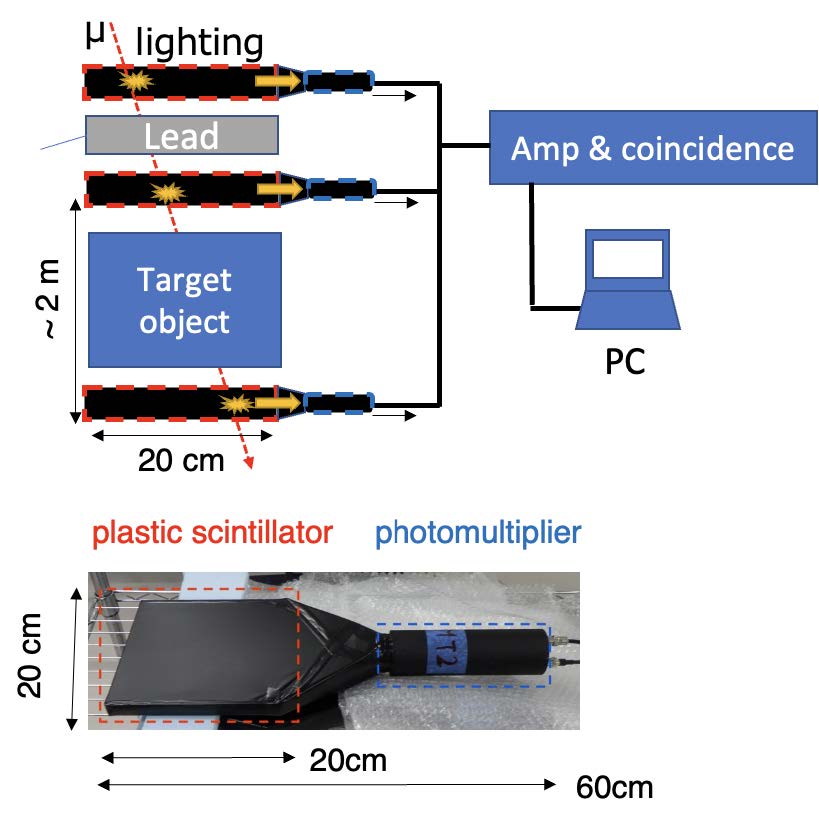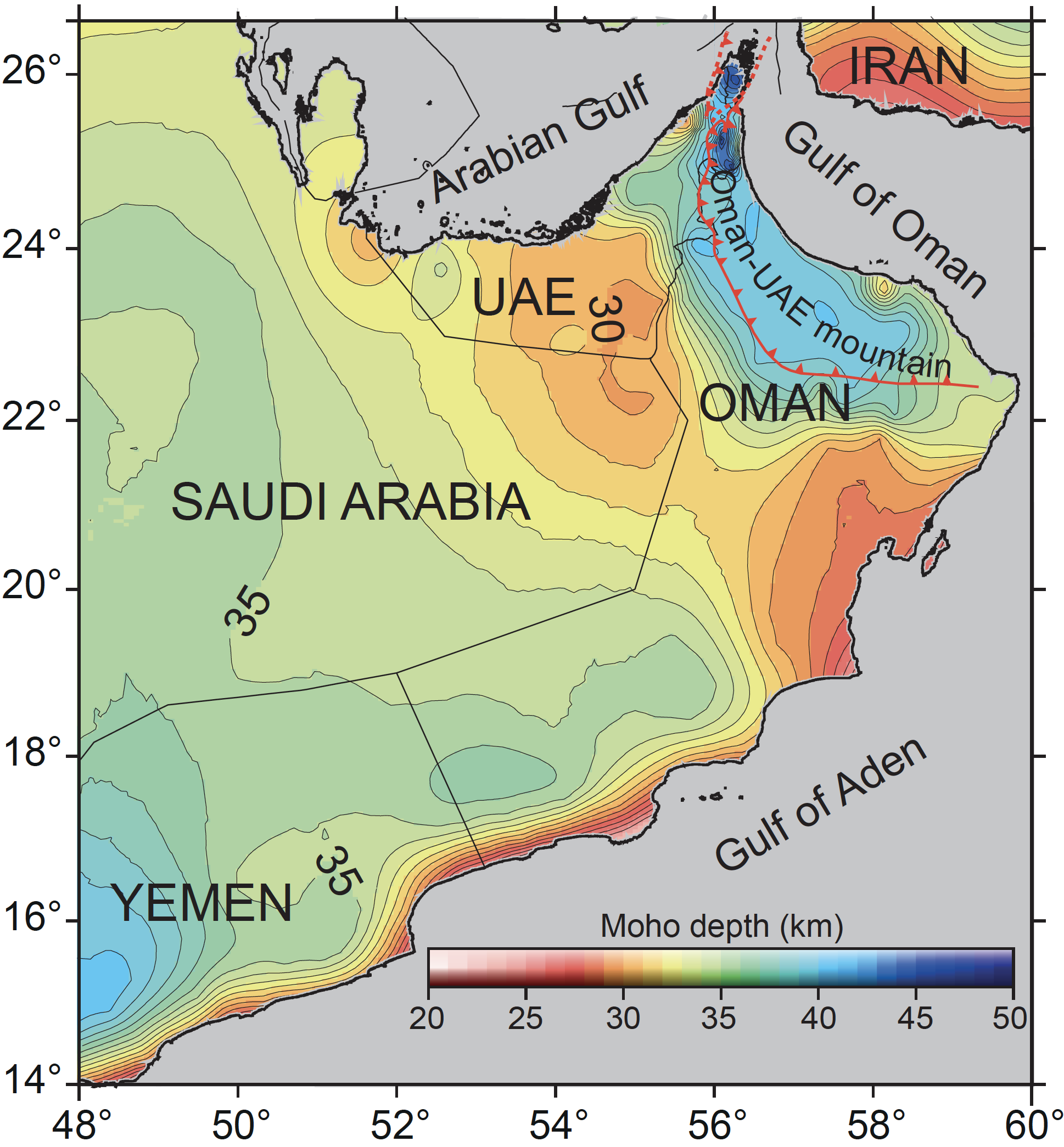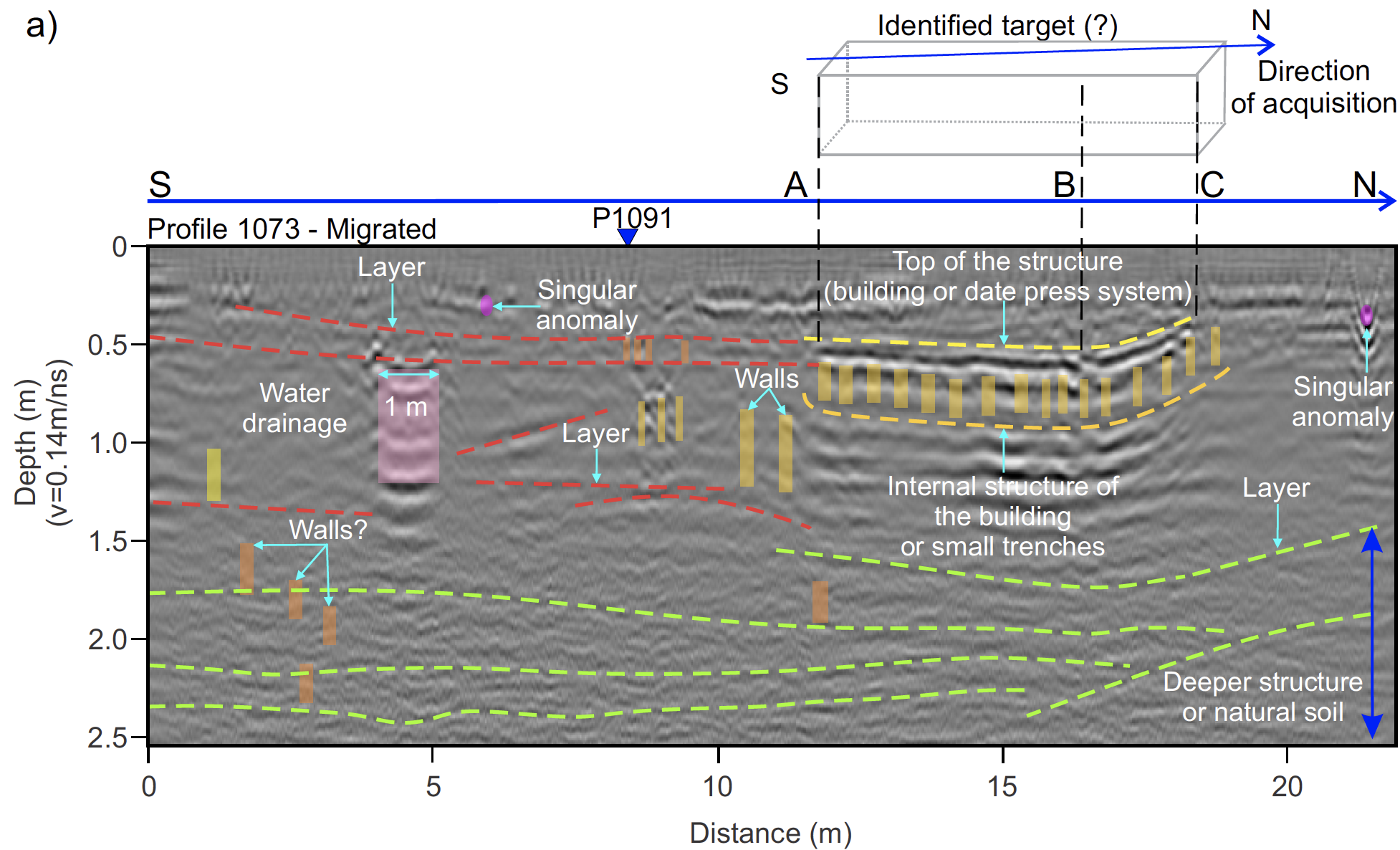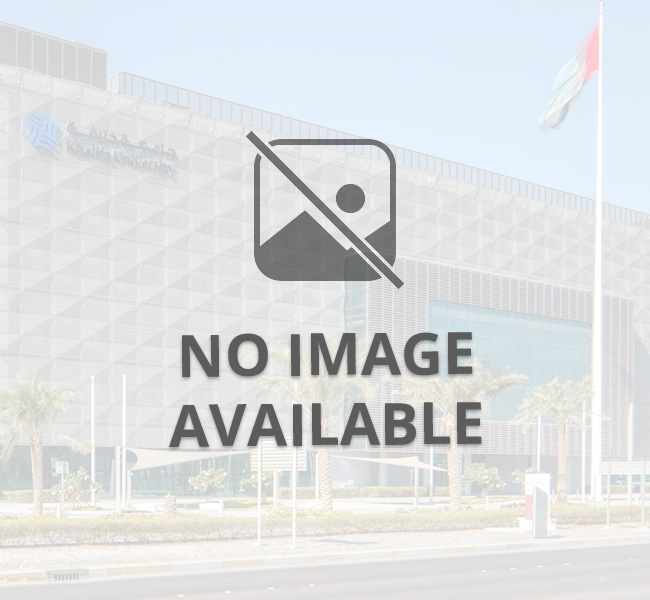Prof. Mohammed Ali holds a BSc in Exploration Geology from Cardiff University, an MSc in Geophysics from Birmingham University, a Postgraduate Certificate in Education from UWCN, and a PhD in Marine Geophysics from Oxford University. Since 2015, he has served as a Professor of Applied Geophysics at Khalifa University. Prior to this, he held positions as an Assistant and Associate Professor at the Petroleum Institute. His ongoing research projects concentrate on the application and exploration of geophysics, particularly in the areas of monitoring, reservoir characterization, and modeling. Additionally, he is involved in research related to basin analysis, crustal studies, geothermal energy, mining, and carbon capture and storage.

Subsurface imaging through cosmic-ray muons and seismic – In collaboration with Professor Jun Matsushima (University of Tokyo) and Dr. Fateh Bouchaala (KU).
This project focuses on investigating different approaches for integrating cosmic-ray muon measurements with elastic waves to estimate subsurface densities. Building accurate 3D models of subsurface reservoirs is crucial for understanding their behaviors and simulating responses to fluid injection and production scenarios. Seismic surveys provide a 3D image of the subsurface, but estimating rock properties, such as bulk density, from seismic data is challenging and uncertain. Cosmic-ray muons offer the potential for density estimation. The project aims to validate the methodology by testing it on synthetic models and real measurements. The approaches to be investigated include using muon data to create a low-frequency initial model for standard seismic inversion, updating the seismic inversion workflow with muon data as a density constraint, and jointly inverting muon and seismic data. By integrating these techniques, a more comprehensive understanding of subsurface reservoirs can be achieved, leading to improved reservoir modeling and characterization.

Crustal and mantle properties of the Arabian Plate in particular the Oman-UAE mountain belt – In collaboration with Tony Watts and Mike Searle (University of Oxford)
The continental lithosphere of the Arabian Plate has evolved through a long and complex tectonic history and comprises major geological features such as an ophiolite complex, Cenozoic basalt extrusion, and Proterozoic basement outcrops. In eastern Arabia, an NW-SE to N-S oriented orogenic belt is present in Oman and UAE. The mountain belt formed due to the Late Cretaceous obduction of the Semail ophiolite, where a thick slab of oceanic crust and upper mantle was emplaced on the rifted Arabian continental margin. However, the mechanical strength of the lithosphere over the entire region is poorly known. In this study, we employ Seismic reflection, wide-angle, Bouguer gravity anomaly, and topographic data, to assess the lithospheric properties of the eastern Arabian Plate.
Evolution of the Precambrian terranes of Somaliland and Yemen – In collaboration with Professor Martin Whitehouse (Swedish Museum of Natural History) and Dr. Salah Al-Khirbash (SQU)
The Arabian-Nubian Shield (ANS) is a tectonic collage of late-Neoproterozoic (approximately 850 to 600 Ma) island arc terranes, signifying the northward extension of the East African Orogen. This orogen formed during the final amalgamation of East and West Gondwana, contributing to the creation of the Gondwana supercontinent. Recognized for hosting one of the largest known collections of relatively young mantle-derived rocks on Earth, the ANS primarily comprises amalgamated island arc terranes, with minimal continental arc or microcontinental fragments. Consequently, it serves as a valuable area for comprehending the processes underlying continental growth.
The project aims to collect and characterize basement samples that may bridge the exposure gap between Precambrian outcrops in Yemen and Saudi Arabia and those in Oman and Socotra.

High-resolution monitoring of seismicity in the Arabian Gulf for improved seismic hazard analysis - In collaboration with Professor Georg Rümpker and Dr. Ayoub Kaviani (Goethe-University Frankfurt)
The Arabian Gulf is located in an earthquake-prone region where the underlying crust is under pervasive stress due to the regional tectonics in the framework of the Arabia-Eurasia convergence. The main manifestation of active tectonics is the extensive seismicity in the Zagros Fold-and Thrust Belt (ZFTB). The seismic activity in the ZFTB is mainly due to shearing along hidden faults in the crystalline basement rocks that have almost no surface exposure. As for the hinterland of the ZFTB, within the Gulf proper, active faults are also expected to be present beneath the sedimentary cover. However, these potentially hazardous fault zones beneath the Gulf have not yet been mapped in any detail, as their seismic activity has not been thoroughly studied.
In addition to naturally occurring earthquakes, seismicity induced by the extraction of oil and gas is another issue to be considered. These extractions can have a significant impact on the crustal stress field, thus activating hidden faults and inducing earthquakes. The resulting induced seismicity can be hazardous for industrial development and settlements in a wider area.

Geothermal Energy Resources in the United Arab Emirates – In collaboration with Professor Hakim Saibi (UAE University)
Geothermal energy has not yet contributed to the renewable energy portfolio of the UAE due to a lack of investigative research into the geothermal potentialities within the country. The purpose of the research is to conduct a comprehensive innovative exploration of geothermal resources in the UAE. Through the acquisition of new geophysical data and analysis of diverse datasets, including satellite imagery, geological, geophysical, geochemical, heat flow, and borehole data, this study aims to identify optimal locations for geothermal energy generation. Furthermore, the research will produce a Geothermal Favorability Map that will provide insights into the state of geothermal features in the UAE. Additionally, the project seeks to estimate the potential power output (e.g., electricity generation) obtainable from UAE geothermal energy sources. The findings of this study will have significant implications for the effective development and management of renewable energy sources in the UAE.

Exploration of Natural Resources in the Horn of Africa (Somaliland and Somalia) - In collaboration with Professor Hassan Hussein from Somali National University.
The project's objective is to assess the hydrocarbon and mining potential of Somaliland and Somalia. Through extensive fieldwork and sampling, we have identified several promising prospects, encompassing hydrocarbons, metal minerals, lithium, and heavy mineral sands (such as zircon, rutile, ilmenite, and magnetite).

Distribution and properties of Hormuz Salt in the United Arab Emirates
In this project, we utilized seismic reflection, well logs, and residual gravity anomaly data from sedimentary layers to ascertain the thickness, distribution, and properties of the Hormuz salt in the UAE.

Mapping active Faults in offshore Fujairah from swath bathymetry: Implications for intraplate tectonics and seismic hazard assessment - In collaboration with Dr. Aisha Al Suwaidi
The eastern offshore of the UAE, situated in the Gulf of Oman, lies adjacent to the northeastern margin of the Arabian Plate. This region emerged after the closure of the Tethys Ocean during the Late Cretaceous period. The sedimentary basin in the offshore area developed due to the obduction of the Semail Ophiolite. Notably, offshore Fujairah is strategically located at the confluence of the Zagros collision to the north and the Makran Accretionary Wedge to the east. Tectonic activities in the area are influenced by the Zendan-Minab strike-slip fault system and the Makran subduction zone, which deforms the Sohar sedimentary basin. It's worth mentioning that the seismotectonic map of the region indicates that earthquake epicenters are distant from the seismically active zones. Earthquakes in the Gulf of Oman primarily occur at depths ranging from 0 to 5 km, where the sediment thickness is approximately 8 – 10 km. The fault plane solution of these earthquakes suggests strike-slip events, similar to the Zendan-Minab strike-slip fault system. Seismic reflection profiles provide evidence of paleo-fault planes and active faults in the Gulf of Oman. Consequently, a comprehensive understanding of surface rupture is critical for studying intraplate dynamics and evaluating the potential for seismic hazards. In light of this, our objective is to acquire multibeam bathymetry data in the offshore Fujairah region to delineate the regional extent of fault systems and their connections to deep-seated fault planes. This study will significantly contribute to our knowledge of intraplate earthquakes and associated dynamics.

Detection of buried archeological objects in the UAE – In collaboration with Dr. Diana Francis
The project aims to design, acquire, process, and interpret geophysical survey data for detecting buried archaeological sites in the UAE. The objective is to amalgamate satellite data analysis and employ advanced geophysical techniques, notably Ground Penetrating Radar (GPR), to identify buried elements such as houses, towers, tombs, wells, and falaj systems, among others. These methods are non-destructive, efficient, and safe for both operators and the surrounding ecosystem, including flora and fauna.
Researchers from the Earth Sciences Department participated in a marine expedition offshore Fujairah aboard the OceanX vessel, in collaboration with G42 and EAD (Abu Dhabi Environmental Agency). The OceanX vessel, heralded as "The most advanced exploration, research, and media vessel ever built," played a crucial role in supporting our research endeavors. https://oceanx.org/oceanxplorer
Our primary objectives involve the collection of sediment and water samples for water quality analysis, the examination of oceanic changes associated with climate change, and the exploration of marine climate records in the Gulf of Oman's offshore Fujairah. Additionally, we are delving into the ocean floor's morphology, features, and water depths to scrutinize records of earthquake/tsunami activity and changes in ocean floor bathymetry.
In this project, I am collaborating with Dr. Aisha Al Suwaidi.
We are actively recruiting qualified PhD students to work on the following (or related) projects:
Crustal and mantle properties of the Arabian Plate in particular the Oman-UAE mountain belt
Evolution of the Precambrian terranes of Somaliland and Yemen
Geothermal Energy Resources in the United Arab Emirates
Exploration of natural resources in the Horn of Africa (Somaliland and Somalia)
Distribution and properties of Hormuz Salt in the United Arab Emirates
Detection of buried archeological objects in the UAE